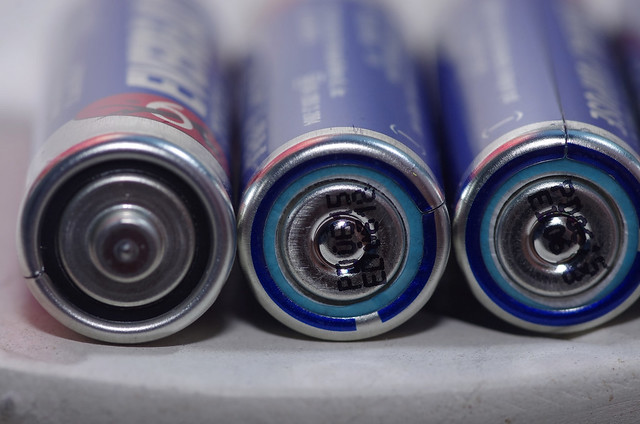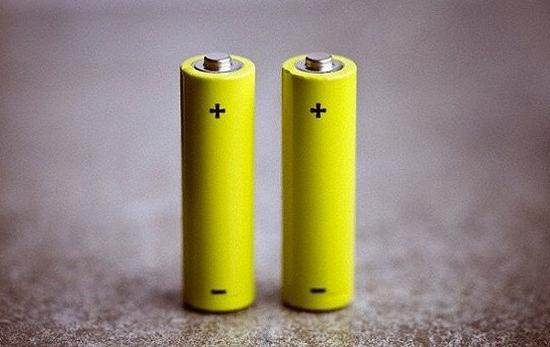Do You Know Who Lithium Ion Battery Inventor Is?
Jul 29, 2019 Pageview:1460
An important new study in the energy world was carried out by the American physicist John Goodenough, famous for having invented lithium-ion batteries, now used in devices of all types. The scientist, at the venerable age of 94, has designed a new type of "all-solid-state" battery together with a team of researchers from the University of Texas at Austin, with faster recharging and the ability to accumulate energy three times higher.
The study, published in the Royal Society of Chemistry and conducted by John Goodenough in collaboration with senior researcher Maria Helena Braga from the Cockrell School, consists of the development of a new low-cost, non-combustible, longer-lasting energy solution with a high density of volumetric energy. Current lithium batteries use liquid electrolytes to transport the ions through the anode (the negative part of the charge) and the cathode (the positive part).
This process does not allow for rapid recharge of the accumulators, which in the event of being forced could cause dendrites or "metal whiskers," causing a short circuit to explosions and fires. The researchers, therefore, to overcome this limitation, rely on glass electrolytes that allow the use of an alkali metal anode without forming dendrites and guarantee the functioning of the battery in conditions up to -20 ° C.
Lithium-Ion Battery Inventor Story:
At 94 you can still dream big, and the American physicist John Goodenough is an example: famous for having invented lithium-ion batteries, now used in devices of all kinds, at his venerable age he came to conceive another idea, which could be revolutionary. The scientist, head of a team of researchers at the University of Texas at Austin, invented a new type of battery, capable of storing energy three times higher and with fast charging. Thanks to its discovery, perhaps one day we could find on the market rechargeable batteries capable of lasting longer and recharging faster (taking minutes, not hours) than those on sale today.
The research about the new "solid state" battery has been published in the scientific journal Energy & Environmental Science Journal. The researchers used a glass electrolyte instead of liquid: this made it possible to get around some of the typical problems with lithium batteries. The latter has several limitations: liquid electrolytes do not allow accumulators to recharge quickly.
They are also subject to short circuits and battery explosion due to rapid recharging. The glass electrolyte, on the other hand, prevents the formation of circumstances that lead to malfunctioning and allows the batteries to operate even at low temperatures (up to -20 ° C).
Goodenough and his team are working on perfecting the batteries more and more, which one day can easily support fast recharges and frequent recharge cycles, as well as being completely safe and avoiding the risk of fires. Thanks to the energy they can store, they can also be used for electric cars. "Costs, safety, energy, recharging cycles are critical issues for green car batteries and to ensure that they are more purchased - the scientist said.
The Historical Effect Of Lithium-Ion Battery Inventor:
Therefore, the primary objective of researchers, but also multinationals operating in the field of electric cars and electronic devices of any kind, lies in developing a battery that finally does not require to be recharged after a few hours of use, but which can have autonomy of even days.
Whoever managed to create this type of accumulator would hold the key to success. Everyone would immediately run to buy the new smartphone that can stay on even a whole week without needing to be recharged. But is this goal possible? Certainly yes, although it is probably not close in terms of time.
To understand how slowly the technology behind rechargeable batteries is progressing, it will be good to draw a brief history. The rechargeable batteries make their appearance around the mid-nineteenth century; this means that today they have 165 years of history behind them, and a period in which their evolution, in reality, was not at all dizzying, as instead happened for the most of the other devices we have today.
The first rechargeable batteries were lead-acid; just think that obviously in a revised and corrected version, they are still used today. Lead-acid batteries are very resistant compared to modern lithium-ion batteries; they produce high energy even if they have a low energy density. Large lead batteries are used today for starting cars and motorcycles.
Do You Think lithium ion batteries Meet The New Challenge At Present?
Another aspect for which these batteries would be preferable to lithium-ion batteries also concerns their resistance to cold and heat. You all know that a smartphone in winter, when it is particularly cold (i.e., when temperatures drop below 10 degrees) slow down their performance enormously. When it is hot, then they overheat and sometimes even turn off. In extreme cases, the batteries could also explode.
However, lead batteries are underperforming, and over time they have tried to find replacement materials: first, they were cadmium, which was adopted in the early 1900s but which at the beginning of the 21st century was banned from the European Community as it is a heavy metal.
Finally, lithium ions began to be used, that concerning lead they guarantee a decidedly higher energy capacity: lead batteries deliver an energy density of approximately 30 WH / kg, while lithium batteries have a density of 150 WH / kg.
But even these batteries are susceptible to improvements, and lithium ions, in a plausible manner, could be replaced either by graphite or aluminum. In this sense, experiments have already been carried out which bode well; however, you need to find ways to make these batteries small enough to be able to power even a smartwatch.
It also seems that systems are being developed to be able to recharge a mobile phone even from a distance, with a system based on electromagnetic fields even if all this will not happen shortly.
- Prev Article: Do You Know Limitless Lithium Battery?
- Next Article: Lithium Ion Battery Manufacturing Process Pollution
Leave Message
Hottest Categories
-
Hottest Industry News
-
Latest Industry News











